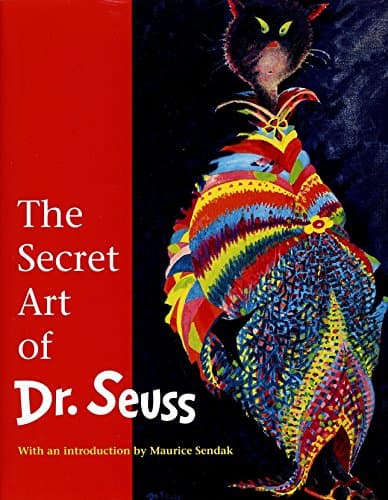
Book Review Summary: The Secret Art of Dr. Seuss
Introduction
"The Secret Art of Dr. Seuss" is a captivating book that delves into the private art collection of the beloved children's author and illustrator, Theodor Geisel, better known as Dr. Seuss. This book showcases Geisel's whimsical and imaginative paintings that were created for his own pleasure, never before seen by the public. These paintings, with their vibrant colors and outlandish creatures, offer a new perspective on the artist's work and reveal a sophisticated and unrestrained side of his artistic expression.
About Theodor Geisel
Theodor Geisel, also known as Dr. Seuss, was an American writer, poet, and artist who created numerous children's books that have become classics. His unique style, characterized by his use of rhymes and nonsensical words, has delighted generations of readers. Geisel's artistic talents extended beyond children's books, as evidenced by the paintings and sculptures featured in "The Secret Art of Dr. Seuss."
Analysis of Views
-
Whimsical and Imaginative: Readers were captivated by the whimsical and imaginative nature of Geisel's paintings. The use of vibrant colors and the depiction of outlandish creatures in otherworldly settings transported readers to a fantastical world where anything was possible.
-
Sophisticated Artistry: Many readers were surprised to discover a more sophisticated and unrestrained side of Geisel's artistry in these paintings. The use of a dazzling rainbow of hues not seen in his children's books added depth and complexity to his work, revealing a more mature and skilled artist.
-
Inspiration and Inspiration: Readers found Geisel's imagination to be an inspiration. The paintings showcased his ability to create worlds filled with wonder and imagination, reminding readers of the power of creativity and the limitless possibilities it holds.
-
Artistic Expression: Geisel's paintings allowed readers to see a different side of the artist, one that expressed his personal thoughts and feelings beyond his children's books. This glimpse into his private world offered a deeper understanding of the man behind the beloved characters and stories.
-
Engaging Visual Experience: The paintings in "The Secret Art of Dr. Seuss" were praised for their ability to engage readers visually. The intricate details and vivid colors drew readers in, allowing them to explore each piece at their own pace and discover new elements with each viewing.
Reasons for Recommendation
-
Unseen Dimension: "The Secret Art of Dr. Seuss" offers readers a unique opportunity to explore a previously unseen dimension of Geisel's artistic expression. This book provides a glimpse into the private world of an artist who has captivated readers for decades, revealing a more complex and sophisticated side of his work.
-
Whimsical and Imaginative: The whimsical and imaginative nature of Geisel's paintings continues to delight readers. The vibrant colors and outlandish creatures transport readers to a fantastical world where the imagination can run wild, making this book a must-read for fans of Dr. Seuss's work.
-
Inspiration and Inspiration: The paintings in "The Secret Art of Dr. Seuss" serve as an inspiration to readers, reminding them of the power of creativity and imagination. This book offers a glimpse into the mind of an artist who has captured the hearts of millions, inspiring readers to explore their own creative potential.
Reasons for Not Recommendation
-
Content for Adults: Some readers found that the content in "The Secret Art of Dr. Seuss" was not suitable for children, as it included nudity and other mature themes not present in Geisel's children's books. While this may be a drawback for families with young children, it could also be seen as a reason for adults to appreciate the book on their own terms.
-
Limited Text: Some readers noted that there was limited text accompanying the paintings, which could make it challenging for those seeking more context or background information about each piece. While this lack of context may be seen as a drawback for some, it could also be viewed as an opportunity for readers to engage with the artwork on their own terms and draw their own conclusions from the visual elements presented.